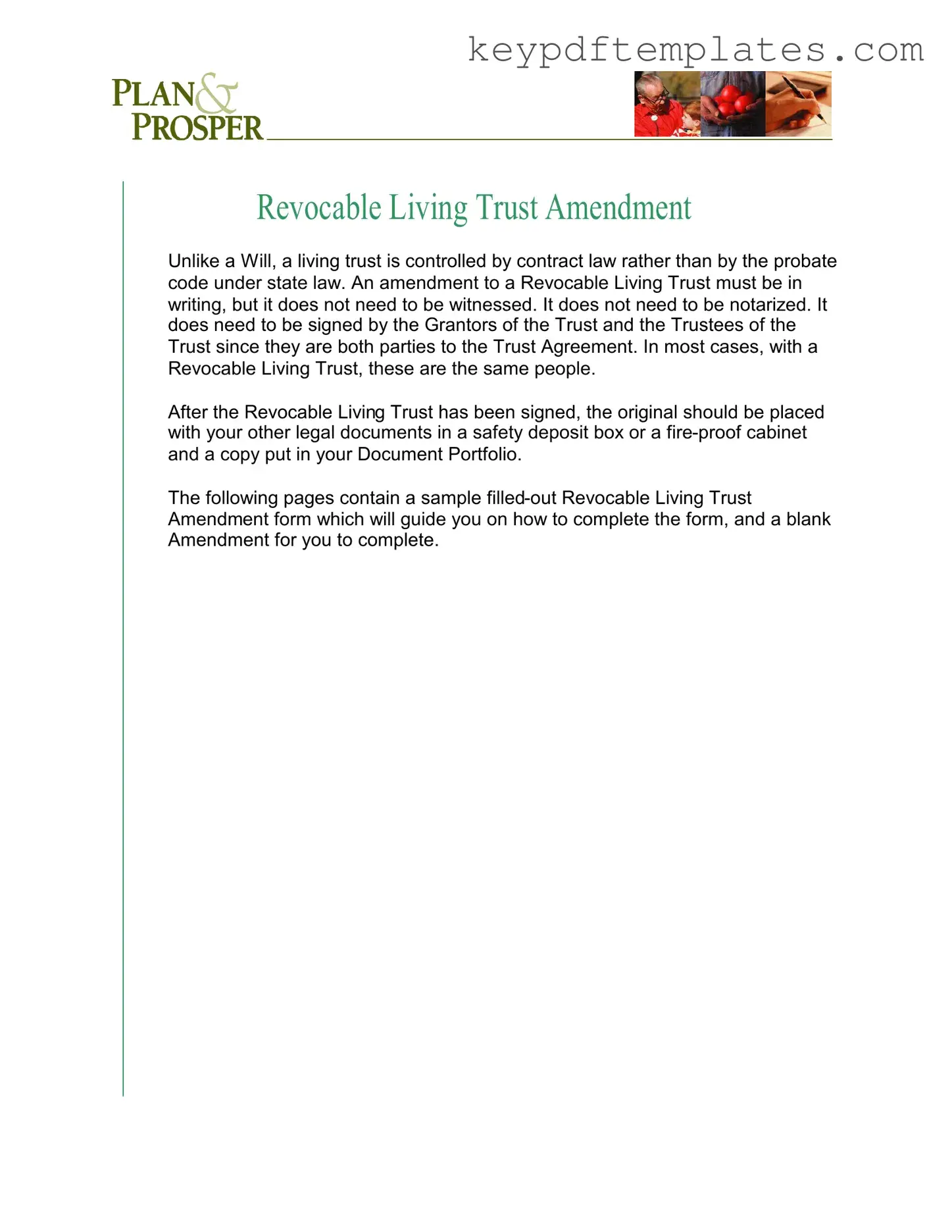Get Trust Amendment Form
A Trust Amendment form is a legal document used to modify the terms of a Revocable Living Trust. This form allows the Grantors and Trustees to make changes without needing witnesses or notarization, as long as it is in writing and signed by the involved parties. Proper storage of the original document is essential, typically in a safe place alongside other important legal documents.
Modify Document Online
